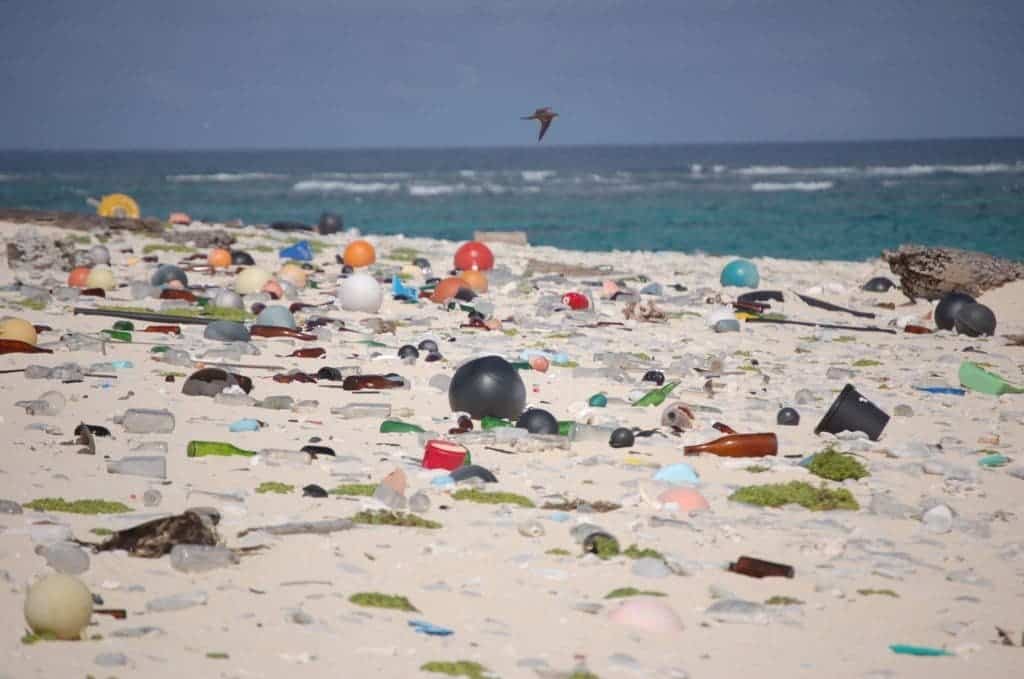Over half a million hermit crabs on remote islands were killed by plastic washing off on the beach. The plastic pieces on beaches create physical barriers and traps that the crabs cannot escape.

Beaches all around the world are drowning in plastic — quite literally. That’s not a new realization. But as Jennifer Lavers and her research team were looking through the debris, they found something unsettling: crabs — lots and lots of crabs.
“When we were surveying debris on the islands, I was struck by how many open plastic containers contained hermit crabs, both dead and alive,” Dr. Lavers recalls.
It became clear that debris on beaches and in coastal vegetation creates a barrier for hermit crabs — which oftentimes they cannot escape. So Lavers and colleagues decided to do a survey across many islands with significant crab populations.
They analyzed a range of sites, looking at how many containers were on the beaches, whether or not they were open and in a position to be a trap, and how many actually contained crabs.
The findings are disconcerting.
“Our calculations show more than 500,000 hermit crabs died from being trapped in containers on the Cocos (Keeling) Islands and 60,000 on Henderson island.”
“These results are shocking but perhaps not surprising, because beaches and the vegetation that fringes them are frequented by a wide range of wildlife. It is inevitable that these creatures will interact with and be affected by plastic pollution, although ours is one of the first studies to provide quantitative data on such impacts.”
The plastic trap is insidious because it plays into the crabs’ biological signals. When a hermit crab dies, it emits a chemical signal to let others know that a potential shell has become available, explained Alex Bond, a curator of London’s Natural History Museum, which assisted in the study.
Thus, a crab that dies after trying to make a home out of plastic sets off an insidious chain reaction: the smell attracts another who dies, and so on, until a very strong signal is produced, drawing most of the crabs in the area. It’s not as much a domino effect as it is an avalanche, Bond said.
This damage is expected to cascade throughout the environment. Hermit crabs play a crucial role by aerating and fertilizing soil, researchers emphasize. They also disperse seeds and detritus, so the degradation of hermit crabs spills into the entire food chain.
Humans also rely on these ecosystems for fishing and tourism, so there is also direct economic damage. The study also only analyzed a part of the crabs’ habitats, so the global damage might be well higher.
A survey from earlier this year found a disturbing amount of plastic on Cocos Island, which is one of the main habitats of hermit crabs, including 977,000 shoes and 373,000 toothbrushes.
Journal Reference: https://doi.org/10.1016/j.jhazmat.2019.121703



